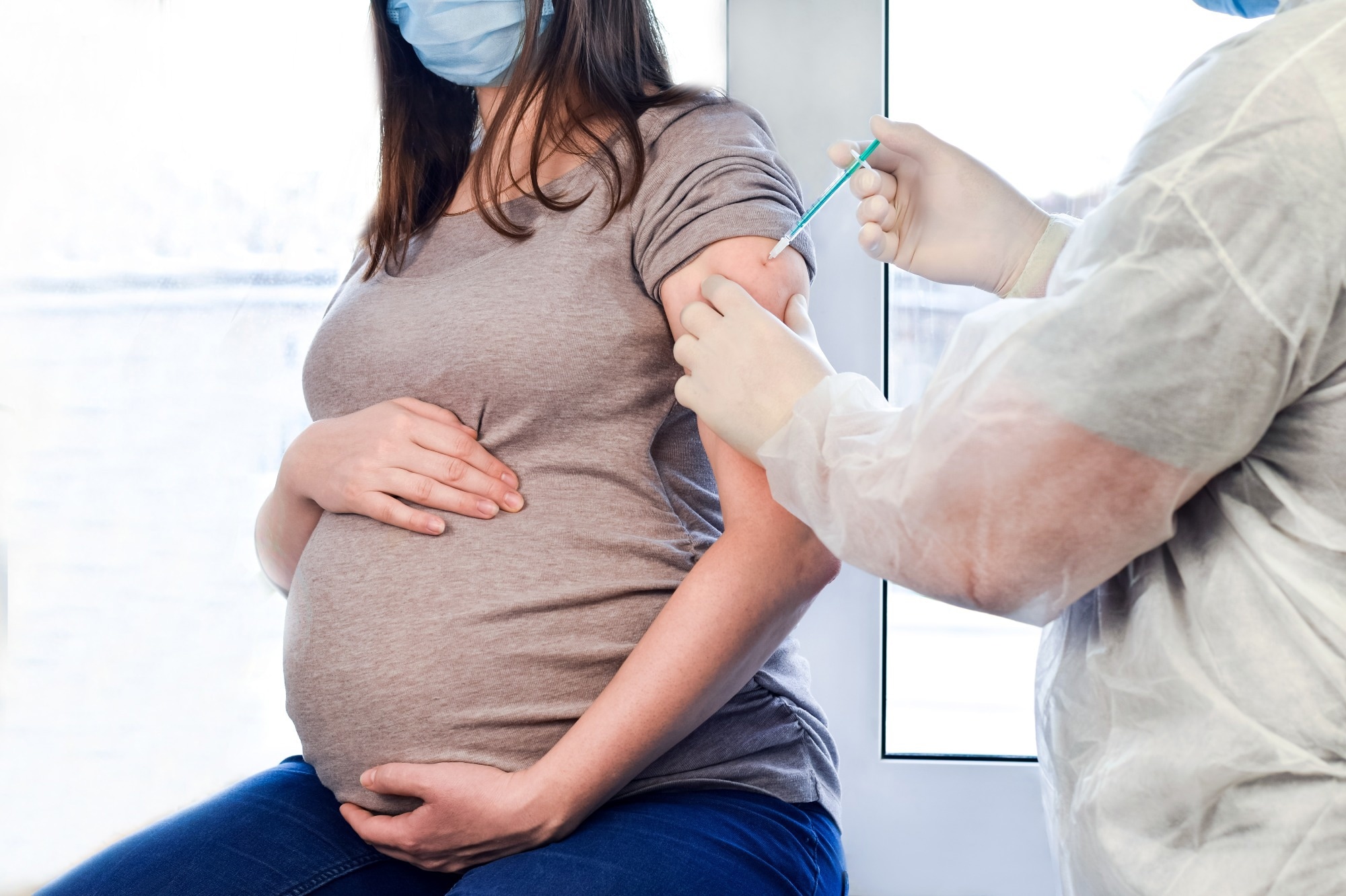In a recent article published in The Lancet Regional Health Journal, researchers compared the impact and cost-effectiveness of maternal vaccination (MV) to long-acting monoclonal antibody (la-mAB) therapy against Respiratory Syncytial Virus (RSV) in young children in England and Wales.
 Study: Protecting infants against RSV disease: an impact and cost-effectiveness comparison of long-acting monoclonal antibodies and maternal vaccination. Image Credit: Marina Demidiuk/Shutterstock.com
Study: Protecting infants against RSV disease: an impact and cost-effectiveness comparison of long-acting monoclonal antibodies and maternal vaccination. Image Credit: Marina Demidiuk/Shutterstock.com
Background
RSV is a global public health concern, especially life-threatening for children under five years, leading to ~3.6 million hospitalizations and 101,400 deaths annually in this age group.
The monoclonal antibody treatment palivizumab (Synagis) protects against RSV; however, it is expensive and requires monthly injections, i.e., frequent dosage.
Palivizumab therapy is, thus, offered to infants at the highest risk, leaving the rest highly vulnerable.
Recently, the Food and Drug Administration (FDA) licensed two new products for RSV prevention: an MV, Abrysvo, and a la-mAB, Nirsevimab.
Preliminary results from clinical trials have shown both are similarly effective against RSV.
However, given their entirely different delivery routes, it remains challenging for public health decision-makers to use them in real-world settings, raising the need for careful evaluation of the impact and cost-effectiveness of both products.
About the model
In the present study, researchers used a mathematical model to calculate the impact of seasonal and year-round programs for la-mAB and MV interventions against RSV using a Bayesian framework and use those estimates to identify the most cost-effective program with respect to purchase pricing and delivery cost.
The study transmission model accounted for 25 age groups from zero to 75+ years, considered both symptomatic and asymptomatic RSV infections, waning of maternal antibody protection of newborns, and subsequent immunity development post-infection.
The model was fitted to RSV incidence in all 25 model compartments based on RSV cases reported to the UK Health Security Agency (UKHSA) between 2010 and 2017.
Another critical assumption was that by the time of implementation of these RSV interventions, RSV seasonality/epidemiology in the UK had returned to pre-COVID trends.
The model captured the RSV transmission rate while accounting for empirical data on age-group-specific social mixing in England and Wales and seasonal variation in RSV transmission.
The model considered three la-mAB programs, assuming a 90% uptake, and two maternal vaccine programs, assuming an uptake of 60%.
The researchers defined the optimal program as the one with the highest incremental net monetary benefit (INMB), assuming a total cost-effectiveness ratio (ICER) threshold of £20,000/quality-adjusted life-years (QALYs).
Furthermore, the study model determined the optimal conditions to implement these programs, quantifying the influence of coverage and the combined cost of purchasing and administration (CCPA) per dose.
Results
In this study, the team evaluated the direct and indirect (herd protection) effects of both RSV prevention products at the population level.
By one year post-immunization, the la-mAB therapy protected more infants than MV (15% vs. 9%).
Similarly, these interventions conferred protection upon 14% of pregnant females who received the vaccine for up to one year.
Indeed, these products could benefit other countries with similar resources and RSV epidemiology as well as low and middle-income countries (LMICs), which bear most of the RSV burden, given these products are made available at competitive purchasing prices and incorporated into their national immunization program.
Both year-round and seasonal MV programs improved health outcomes in infants aged one year, with the former being more effective in preventing disease incidence in the 6–11-month age group compared to the seasonal program.
Accordingly, it averted 6.2% (vs 1.4%) symptomatic cases and 8.8% (vs. 2.5%) hospitalizations. However, in infants aged 0–2 months, the seasonal la-mAB programs were more effective, preventing 34% of symptomatic cases.
The la-mAB programs also provided larger QALY and cost-saving gains compared to the MV programs, 3,819 (vs. 3,042 for MV) and 5,867 (vs. 3,819 for MV) for seasonal and year-round programs, respectively, and £118,731,529 (vs. £73,650,588 for MV) and £167,160,601 (vs. £96,604,729 for MV) QALYs for seasonal and year-round programs, respectively.
Assuming low CCPA for both products, the la-mAB programs emerged as the optimal choice in cost-effectiveness analysis (CEA).
At the population level, the effects of both products, including their indirect effects, were similarly effective at preventing RSV disease.
Overall, given their presumed higher coverage, the la-mAB programs prevented more RSV cases than the MV programs and were more cost-effective.
Conclusions
This study provides compelling evidence that both MV and la-mAB substantially reduced the burden of RSV disease in the infant population in the UK.
The results showed that a year-round MV program with 60% coverage would avert 32% of RSV hospital admissions, and a year-round la-mAB program with 90% coverage would avert 57% among infants under six months old in England and Wales.
The MV program would also avert cases in pregnant women, who account for 20% of the population-level health burden.
Furthermore, a seasonal la-mAB program could be cost-effective for up to £84 for CCPA, and a seasonal MV could be cost-effective for up to £80 CCPA.